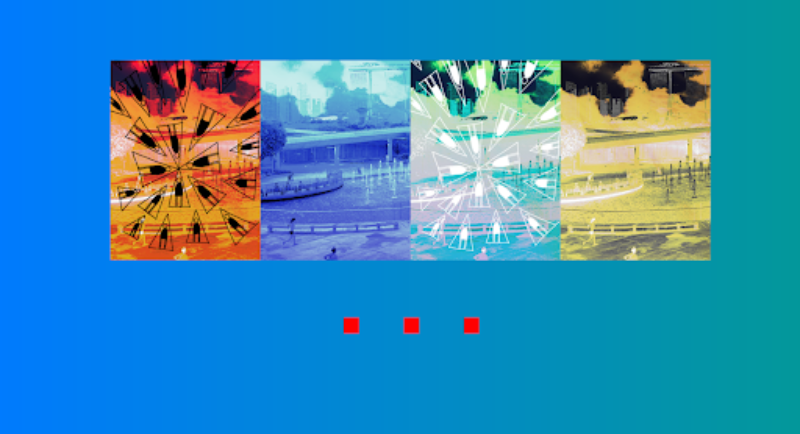Regional Report: Southern California and Hawaii
Recent mail from the painter Art Green. Photograph by Paul Maziar, who plans to write more about Green's life and work.
July 14, 2020
AICA-USA's regional representatives report on the state of the arts and art criticism in their area in order to bring wider awareness of important exhibitions, events, and the accomplishments of art critics throughout the country. The following notes were compiled by Paul Maziar, AICA-USA's regional representative for Southern California and Hawaii.
Hello from Long Beach,
Safe to say, it’s been a doozy for everyone. But that’s not really news. As AICA-USA's new Southern California and Hawaii regional representative, it’s my privilege to send along a periodic reminder, the good news that there’s still art to be made, seen, interacted with, responded to.
I recently reached out to and heard back from my AICA colleagues in the Southern California area, to get a sense for what art historians and writers have been doing—particularly during this strange stay-at-home period. Below is our update. Stay in touch, stay safe—and let’s keep the conversation going.
As for me, in spite of myself, I’ve been reinvigorated through recent conversations with fellow art-writers (in AICA-USA) and painters, reminding me there’s still good work to be done. Though not a Californian, the painter Richard Baker has been on my radar and I look forward to interviewing him for BOMB this fall. On my desk: James Lord’s Giacometti; Emmanuel Iduma’s A Stranger’s Pose; and Fanny Howe’s Night Philosophy, among others.
“Writing enables me to transform emotion into thought, confusion into connection, anger into exchange, blockage into circulation.” — Michael Brenson, Acts of Engagement
Yours ever,
Paul Maziar
Mila Gokhman, Gray, Black, and Yellow, 2019, cut paper collage, 12.5 x 12 inches. Collection of the artist.
From Roni Feinstein:
I have been occupied writing an article and putting together a website for Mila Gokhman, an 86-year-old artist of soaring creativity whose work came to my attention shortly before the lockdown. In 2000, Gokhman abandoned a successful career as an artist and innovative designer (poet!) of leather art and jewelry in Kiev to care for her ailing mother in SoCal. She has spent the last 20 years living in obscurity, yet continues to make art daily. Inspired by nature and music, she creates meticulously crafted, abstract paper collages that pulsate with life, joy, and movement. Please watch for the website, milagokhman.art!
From Jody Zellen:
I write art reviews for a few local publications and also post a weekly review on What's on Los Angeles.
On May 13, once I ran out of shows I had seen to review, I began posting about what artists were making and not necessarily exhibiting in these disconcerting times. Since all art venues are presently closed, rather than write a pick of the week for What's on Los Angeles, I have decided to write about what select artists are creating in their studios. The series begins with Eileen Cowin and continues with Stas Orlovski, Bill Barminski, Fran Siegel and Heifi Johnson.
In realizing how dissatisfying it is to me to look at jpegs and online viewing rooms, I have also returned to making net art. Avenue S is a new addition to the net art project "Ghost City," 1998-2020. It is an ever-growing series of linked web pages containing multiple rollovers, fragmented images, animations and texts that are a poetic meditation on isolation. It feels like a ghost town everywhere these days—the streets are empty, the beaches and parks are closed—as we stay at home or walk alone wearing masks, Avenue S provides an alternative experience.
Viewers of Avenue S are presented with image-text relationships, unstructured narratives, rollovers, gifs and pop up windows. Avenue S is developing spontaneously and functioning as a visual journal during these disconcerting and unprecedented times. While what is possible online has changed and grown more sophisticated over time, Avenue S is a return to the basics of net art—a sequence of linked web pages that function like poems and commentaries on what is happening in the world today.
Image from Avenue S, by Jody Zellen.
From Ellen G. Landau:
I have been busy with the following projects:
acatalogue and exhibition review of Lee Krasner: Living Colour that opened at the Barbican in London last May, published in Womans Art Journal, spring 2020;
a catalogue review of With Pleasure: Pattern and Decoration in American Art, 1972-1985, Museum of Contemporary Art, Los Angeles, in process for fall publication with Womans Art Journal
;
an essay for James Levis Inc. in New York, titled "Elaine de Kooning paints a children's portrait," (7000 words), currently in process;
completing final edits for an essay titled "Peggy’s War Babies’: Robert Motherwell, Jackson Pollock, and William Baziotes at Art of This Century,” in the forthcoming book Complementary Modernisms in China and the United States: Art as Life/Art as Idea, Zhang Jian and E. Bruce Robertson, eds., (Punctum Books, 2020), 310-325.
From Liz Goldner:
In early March, when art venues began closing, I began grieving for my life as it had been—filled with art exhibitions, events, and dialoguing in person with artists and art supporters.
Soon, I began writing and publishing articles about the art world in the new normal. I have published more than a dozen articles for several publications since early March. I have written art reviews for exhibitions that were shut down before the articles were published. I saw two of these shows, and wrote one review from jpegs. I have written three artist profiles.
My recent article for LA Weekly addressed the UC Irvine School of the Arts’ adventurous virtual end-of-year exhibitions and performances. I am working on two articles for KCET's Artbound website, aiming “to reconnect Los Angelenos to the vitality of its arts and culture scene, restoring this crucial link between artist and community,” as the editor wrote.



